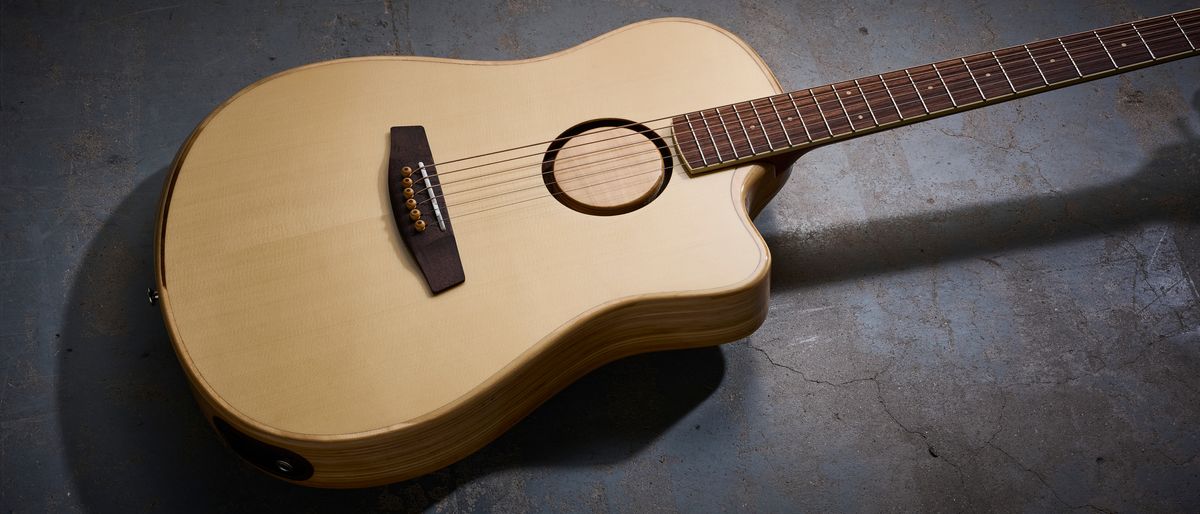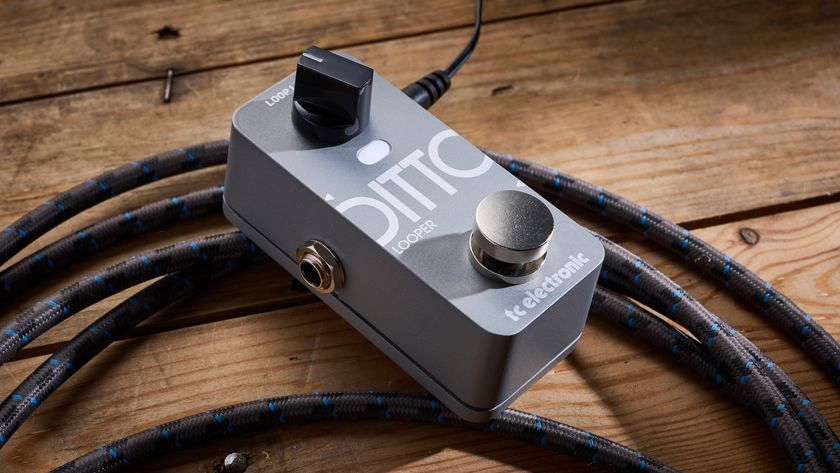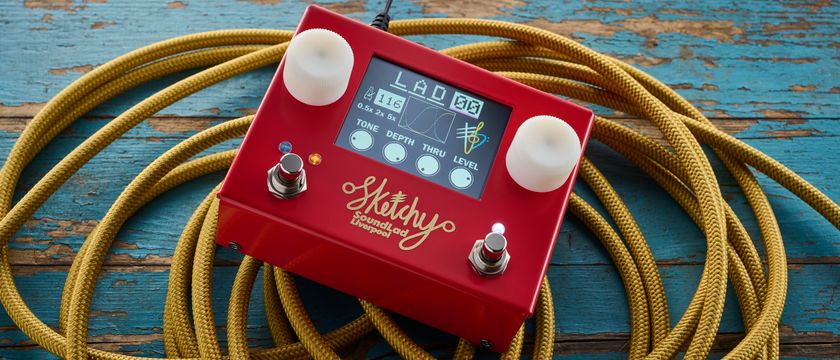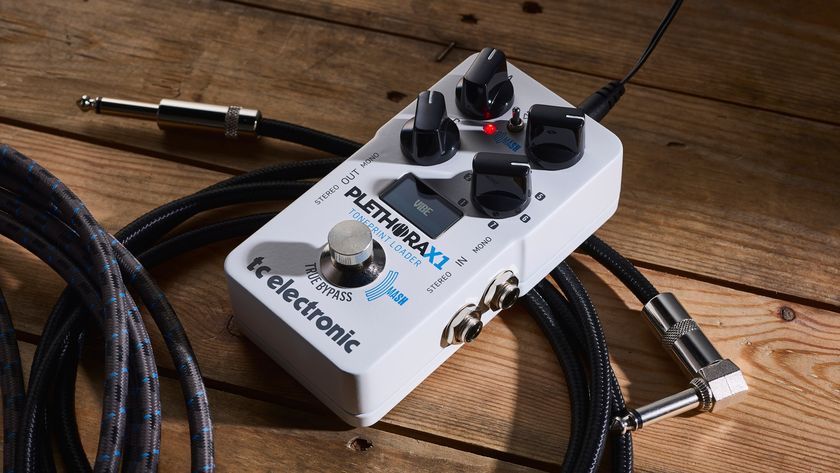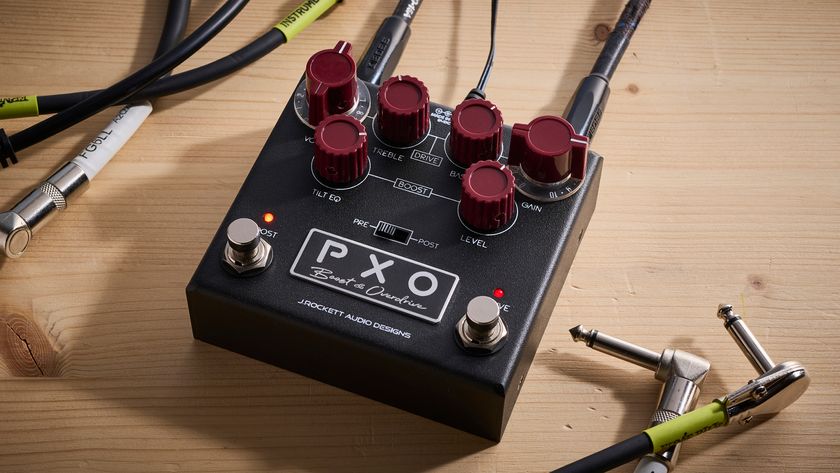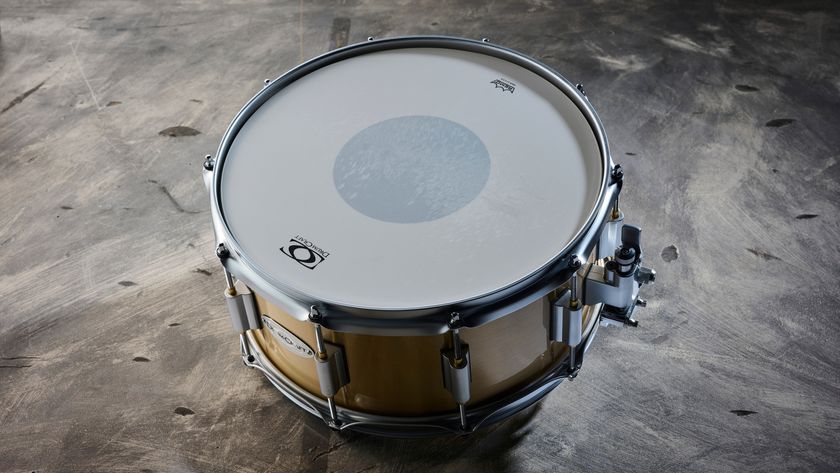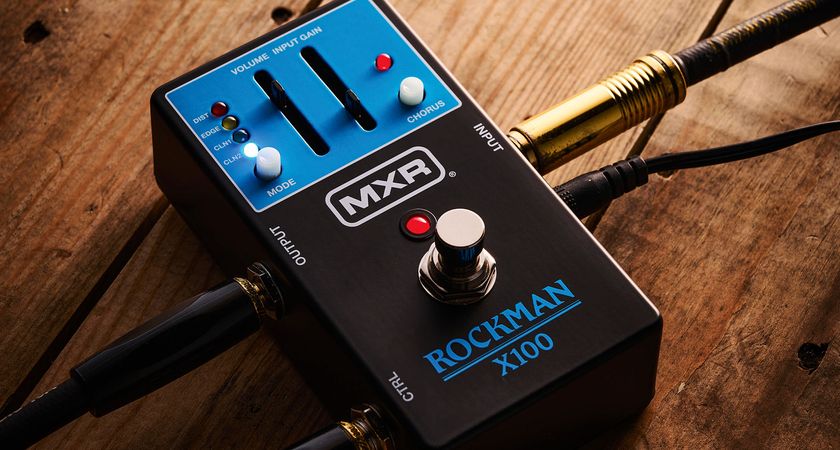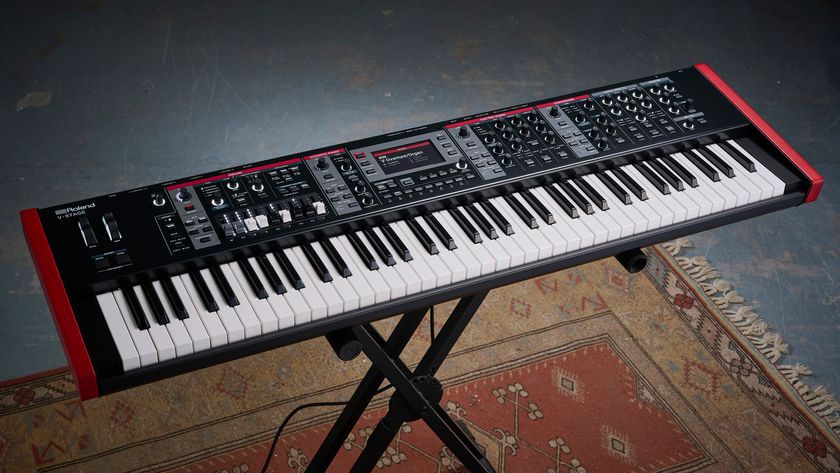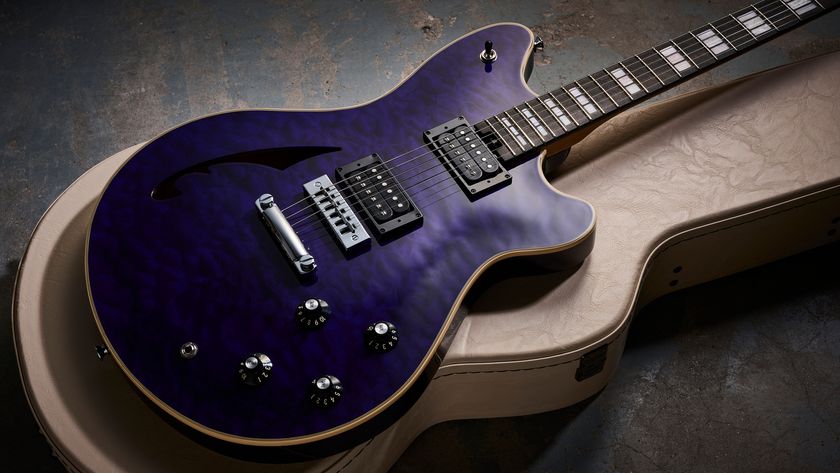MusicRadar Verdict
This is the closest an electro has got to the holy grail of a mic'd acoustic sound with the versatility for a band mix too. The design requires an open mind but Lloyd Baggs has innovated for players again here, and we thank him for it!
Pros
- +
Superb electro-acoustic tones.
- +
Comfortable playability.
- +
The acoustic performance isn't as compromised as you might expect.
- +
Tuning stability is very dependable.
Cons
- -
The design won't suit some players.
- -
A significantly better deal in the US when it comes to current retail prices.
MusicRadar's got your back
What is it?
The plight of the live acoustic guitar player is ever present; getting a crowd to quieten down is one thing, actually achieving a pleasing sound from your amplified instrument is quite another. Some nights I still wake to the harrowing memories of plasticky piezo quack in a sparsely populated bar. Because the reality is that the complexities of our acoustic instruments seem ill-suited to the realities of capturing them away from the condenser mics of a studio environment. And yet thankfully innovative designers have persisted and helped us to be heard and sound good.
One of the very best is Lloyd Baggs, whose company LR Baggs has been trusted by pros and weekend warriors alike for 40 years to lead the way in pickups, preamps and pedals for acoustic musicians. But guitars themselves? This seems new. It isn't…
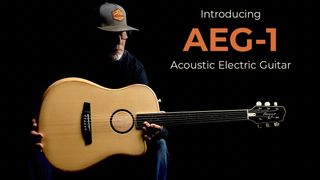
"Most of you know us as a pickup company because that's what we've been doing for the last 40 years or so," Lloyd admitted. "But I don't think too many of you know that I started out in the music business as a luthier, and in fact that's how I got into the pickup business."
Mr Baggs was building guitars in his garage by the mid '70s, even making a guitar for his friend Ry Cooder. This eventually lead to a meeting with Takamine, with the Japanese company supplying pickups for his home builds. But Lloyd's inquisitive mind drove him to look deeper into the design of these pickups and how he could make lighter designs of his own. So his path diverted into that side of the business. But those electro-acoustic design ambitions remained into the '80s, and now the AEG-1 finally allows them to come to fruition on a production model in unexpected ways.
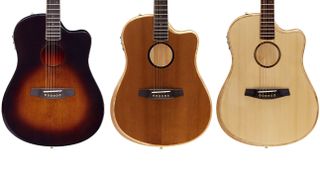
The production AEG-1 isn't being built by Baggs – Lloyd designed and proved the concept over Covid but it's being manufactured via a partnership with Crafter in Korea. A company that's been a customer of Baggs for three decades.
Overseas manufacturing obviously helps keep the asking price down, but this isn't a straightforward build either; the AEG-1 is quite different to anything that's gone before, and Crafter had to go on its own journey to produce it. Aside from the instrument itself, its pickup system is a custom version the Baggs Hi-Fi Duet, already available to buy separately at $449/$489.
It becomes clear that the guitar design isn't simply a mere platform for the latest Baggs system. The combination defies a few traditions in pursuit of the evolution that has typified Baggs as a company. Indeed, there's a sense the aim here is to produce the ultimate stage acoustic guitar.
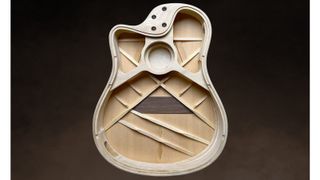
The top is scalloped X-braced and surrounded by an American poplar plywood rim, with a solid rosewood back for additional resonance. It's pretty thin at 63.5mm, with controls for the preamp system on the top side and a 9-volt battery box on the bottom that sides out.
The patent-applied-for internal structure of the AEG-1 is a key to what I discover about its sounds later. The solid rosewood back is braced, but it doesn't hold the neck stable alone; the AEG-1's plywood rim (machined out of of plywood manufactured in the US) allows the neck to be supported at two points at the guitar's top, with the rest of the top floating free of the neck structure. "Neither the back nor the top need to be responsible for keeping the neck anchored," says Llloyd. "That does two things; it allows us to make the top and the back more sensitive, and the neck is so solid, more energy from the strings is driven into the top instead of being lost in vibration in the neck."
As the back isn't holding the neck, Baggs points out that the solid rosewood can be tuned to reinforce the lower frequencies of the guitar. So the idea is it's a thinner electro-acoustic guitar that doesn't necessarily sound like one.
The mostly filled soundhole acts to help reduce feedback while allowing some of the acoustic sound out. And there's a rubber feedback ring included to fill the remaining space as your stage volume needs dictate. Handy.
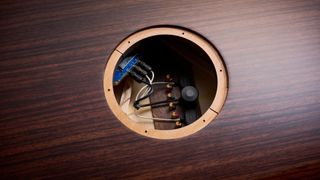
With a design in place with resonance as a priority, the Hi-Fi Duet system is used to take full advantange. This can be reached via a rear control cavity where its pickups are fixed to the rear of the bridge plate, either side of Baggs's new alumnium Silo mic. The two sources can be blended via the AEG-1's Mic control with a notch at 50/50. There's also a Volume and Tone rotary control (the latter reduces treble anti-clockwise before midday and increases it the other way), plus a Phase Inversion switch.
Specs
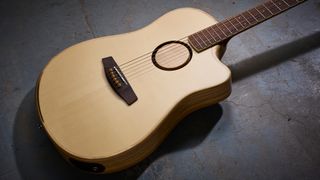
Launch price: $1,599/£/€
Made: Korea
Body top: Engelmann spruce
Top bracing: Scalloped X
Back and sides: Solid Indian rosewood back, composite poplar frame sides
Neck/shape: African mahogany/Slim C
Scale/length: 25-5/8” (651mm)
Frets: 20
Nut/width: Composite, 43mm
String spacing at bridge: 56mm
Fingerboard/radius: Indian rosewood, 16"
Body depth: 63.5mm
Finish: Natural
Bridge/pins: Material
Tuning machines: Closed back
Electronics: Custom HiFi Duet with HiFi Pickups and Silo Microphone
Weight: 6.38lb/ 2.89kg
Case: LR Baggs softshell case
Options: Natural (Engelmann spruce as reviewed), Torrefied Sitka spruce, Sun Burst (Sitka spruce)
Left-handed options: No
Contact: LR Baggs
Build quality
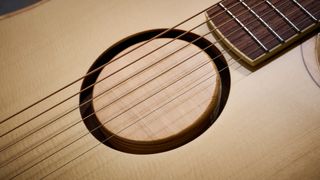
Build quality rating: ★★★★½
The three initial AEG-1 models all have solid rosewood backs but differ in top wood and finish. Our test guitar features Engelmann spruce in a natural finish, a torrefied Sitka spruce and Tobacco Sunburst in regular Sitka spruce round out the trio.
The thinner body may recall the recent – though non-cutaway – Fender Highway but this is a different guitar in feel. The glossy finish gets an unusual visual frame with the visible plywood layers of the sides – and it's much more appealing than I'm making it read. But, typical of a lot of things in the guitar world, and especially new ideas, it is going to divide opinion.
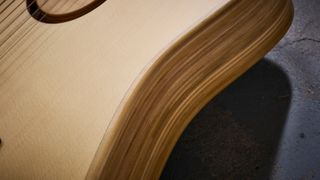
Lloyd Baggs was inspired by the mid-century plywood furniture of Charles and Ray Eames, Eero Saarinen here. I like this idea of plywood layers becoming an aesthetic rather than something to hide away under a colour finish. The poplar composite here is custom-made in the US and is "strong, lightweight, and extremely stable," according to Baggs. "Making it the perfect platform to support the resonant top and back of our guitar.”
This guitar is a break from tradition, clearly, and it looks it but the build quality is of the standard I'd expect from the 40-year reputation of the Baggs name, and a testament to Crafter's partnership.
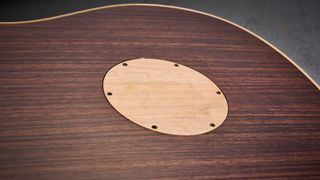
My only small caveat is the unglossed panel opposite the soundhole on the back that doesn't match any of the other wood tones here. It looks a bit of an afterthought on a guitar that seems very well considered elsewhere – but it will be rarely seen, at least.
Playability
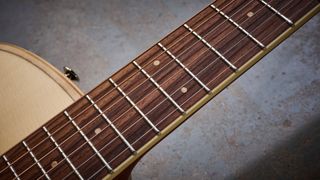
Playability rating: ★★★★½
If it looks different, the AEG-1 definitely feels like an acoustic to plat. One with a slim body that speeds the bonding experience, but a 16-inch radius Indian rosewood fingerboard and tension from gauge 12 strings make no attempts to enter the hybrid territory of the Acoustasonic world.
The generous body cutaway and inclining carve around the heel of the 4-bolt African mahogany neck does feel enhanced compared to most electro-acoustics, but even with the medium-low action (1.9mm at the low E, 1.6mm at the high E) I think I'd personally prefer a lighter 11 gauge set fitted to take more advantage of it. I tune down half a step to confirm the suspicion. But as ever; horses for courses!
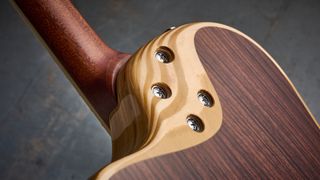
The transitions between standard, flat and then into DADAD I make highlight a huge strength of the AEG-1's structure that Lloyd Baggs has already suggested; it's incredibly stable with tuning. It stays in tune even between stays in its padded case. Boding well for a potential life between home, vans and venues.
The AEG-1 has a very appealing neck; Modern C and a satin finish for the mahogany, comfortable for thumb chords. It's a really comfortable guitar all round, with a weight that's reassuring and a build that feels robust.
Sounds
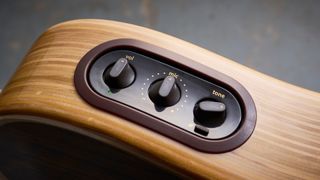
Sounds rating: ★★★★★
Lloyd Baggs isn't a man for baseless hype – as 40 years being trusted by pros attests. And so it proves here; the AEG-1 doesn't sound acoustically as I expected from such a thin body. The bottom end is deeper than it has any right to be – the rosewood back does indeed do its job well. Don't expect Taylor-esque hi-fi of course, but the sustain is surprising and the character not as compressed as one would expect from this body depth. It's all by design of course.
It soon becomes clear that the Baggs AEG-1 is going to change my expectations in this market
As I test the AEG-1 through a Line 6 Power Cab at small stage volumes set to flat mode, a Laney A1 Acoustic combo and a Fishman Aura pedal (imaging dialled off) through the new Headrush FRFR Go desktop cab, it soon becomes clear that the Baggs AEG-1 is going to change my expectations in this market. Is this a watershed moment for acoustic-electric guitar? Yes and no.
The no part is only because this is a convincing sell for the Hi-Fi Duet as well as the AEG-1 as a whole – a system you could have fitted to your favourite traditional flat top. But the fact this guitar is designed for the system should not be underestimated. And the result are the best amplified acoustic sounds I've heard to date.
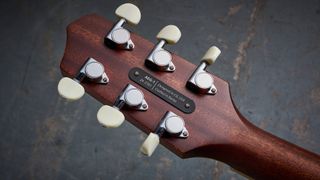
Quote text here
It's tempting to suggest that the ultimate goal of the AEG-1 should be a character and response through a PA that's evocative of a larger-bodied acoustic being captured with a quality condenser. Rich high-end and delicate highs. But any acoustic guitarist who's played with a drummer and even an electric guitar player will know that's not always the optimum goal. You'll need some cut - with a little grit and the enhanced mid weight of an electric. This is where the AEG-1 really impresses. It can cover both needs, and cover them very well indeed.
"It kind of gives you the best of both worlds," noted acclaimed Grammy-winning flat top musician Molly Tuttle, who road-tested the AEG-1 for six months before sharing her thoughts on video. "When you want to play something that sounds like an acoustic but maybe packs the punch of an electric guitar."
She refers to it as "an acoustic guitar on steroids" but in solo scenarios it can do delicacy. It feels different to anything else I've played just sitting alone with it plugged in. My very first impression was that it felt right – an extension of the sound of the guitar. One that belies the thin dimensions that make it such a comfortable instrument, especially for vocalists.
The Tone control's scope and Silo Mic are crucial. You can push the latter's level further because of the soundhole's feedback-reducing design. That means it's much more practical for percussive technique than some blend systems I've encountered, ones that can get risky with feedback at stage volumes.
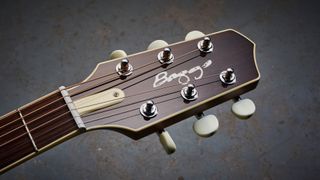
The low end is one of the biggest revelations here. Lloyd Baggs has achieved something that shouldn't be possible from a guitar with these dimensions, and it's going to persuade people to consider this bold new design.
Unsurprisingly I found myself dialling the mic back to around 30-40% for the kind of sound that I'd have chosen back when I was playing in an acoustic rock four-piece with a Baggs M1A soundhole pickup (oh how I wish I'd had this guitar then!). Then up to around 65%-75% with Tone at around 40% for a darker, more organically 'acoustic' solo fingerstyle folky sound. It feels intuitive – with the sounds many gigging players will have been searching for. I know I've already said it but the AEG-1 feels right in use very quickly.
Verdict
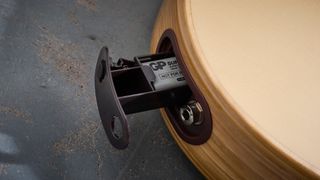
If you regularly play live acoustic gigs I think the price here will be acceptable. In the US that is, where the SRP for this guitar is $1,599. Across the Atlantic, the launch price for the AEG-1 is notably higher at £2,099, which is disappointing and I really hope it's not a sign of things to come for the industry in 2025. Perhaps time will tell with regards to street prices for this particular guitar but it's a significantly higher outlay in Europe at the time of writing.
As it stands, the AEG-1 is a pro-grade live guitar and needs to be tried and considered because it can deliver great things as a trusted workhorse. Baggs and Crafter have got the recipe right. They achieved what they set out to do here. And though I personally prefer the other two finishes to our test Natural Engelman Spruce, it's great to see three distinct choices at launch that will offer their own nuances on the AEG-1 blueprint.
No matter where you stand, I say try it anyway – it may well sell the Hi-Fi Duet system to you for your own steel string
Of course, some players simply won't even consider an acoustic guitar that looks like this. And of course, looks matter – the main facets of acoustic guitar aesthetic have stood the test of time for good reasons. But no matter where you stand, I say try it anyway – it may well sell the Hi-Fi Duet system to you for your own steel string. And even if neither of those options suits you right now, the existence of this guitar and the technology it showcases are surely a cause for pause.
Acoustic guitar players have often moped at the side of the stage casting envious glances at the electric world when it comes to new thrills and envelope-pushing guitar design, but the last few years have seen a shake-up with select models from the likes of Fender, Yamaha and Martin. Now we can add Baggs to the group of trailblazers – Lloyd is still innovating 50 years on from his garage days.
MusicRadar verdict: This is the closest an electro has got to the holy grail of a mic'd acoustic sound with the versatility for a band mix too. The design requires an open mind but Lloyd Baggs has innovated for players again here, and we thank him for it!
Test | Results | Score |
|---|---|---|
Build quality | A divisive look perhaps but a very good build. | ★★★★1/2 |
Playability | The 16" radius and C-shape profile makes for a comfortable experience – with the advantage of good upper access. | ★★★★1/2 |
Sounds | Real benchmark stuff from Baggs here – it's raised the bar on quality and versatility | ★★★★★ |
Overall | An excellent, landmark stage acoustic that will be worth the USD outlay for anyone who plays regularly and is looking to step up with their core sound. | ★★★★1/2 |
Also try
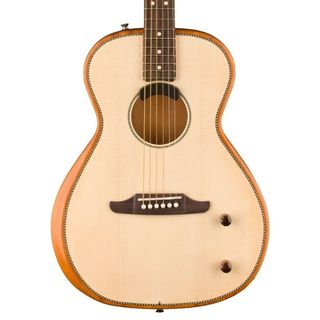
$999/£849
If you want a thinner acoustic with a bigger plugged-in sound, this has the added appeal of electric-like playability. Fender's collaboration with Fishman offers a Fluence pickup with two different EQ settings to blend.
Read more: Fender Highway Series Parlor review
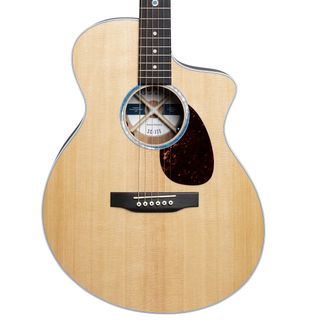
$1,599/£1,629
A deeper body but some of the best upper fret access you'll find on any acoustic (it's a heel-less design) is paired with buttery playability and Fishman's MX-T system with built-in tuner. A bold design from Martin.
Read more: Martin SC-13E
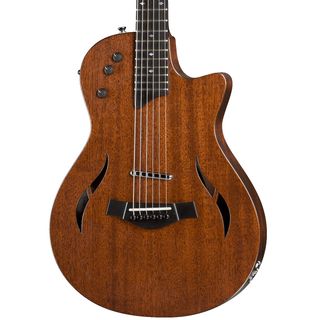
$2,499/£2,199
If you need the hybrid approach of acoustic and electric tones, Taylor offers a three-pickup design with a body sensor alongside two humbuckers. It leans more towards electric guitar playability.
Hands-on videos
Trey Hensley w/ LR Baggs
Molly Tuttle w/ LR Baggs
Gary Roberts
Zach Wish
Trey Hensley w/ LR Baggs

Rob is the Reviews Editor for GuitarWorld.com and MusicRadar guitars, so spends most of his waking hours (and beyond) thinking about and trying the latest gear while making sure our reviews team is giving you thorough and honest tests of it. He's worked for guitar mags and sites as a writer and editor for nearly 20 years but still winces at the thought of restringing anything with a Floyd Rose.
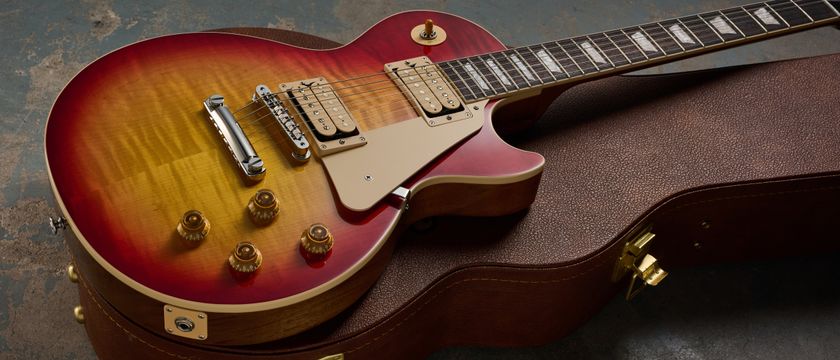
“This is a beautiful, well-executed Les Paul, and that’s the sort of guitar you tend to hold onto for life. That’s as sound an investment as there is”: Gibson Les Paul Standard ‘50s Double Trouble review

“We were able to fire up a bass sound that was indistinguishable from the flavour of New Order’s Blue Monday in seconds”: EastWest Sounds Iconic review

“How long did it take me to get over it? Oh, quite a while”: Brian May on the “supreme injustice” of Roger Taylor’s Queen B-side "making as much money as Bohemian Rhapsody"
